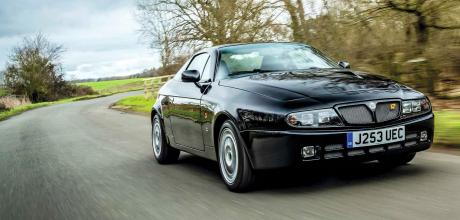1991 Lancia Hyena Zagato
Nothing funny about the Zagato-bodied Lancia Hyena, though few cars will make you grin more broadly. Glen Waddington takes the wheel.
Photography Barry Hayden
LANCIA HYENA ZAGATO’S EXOTIC INTEGRAL!
How exotic bodywork transformed a legend
LAUGH RIOT
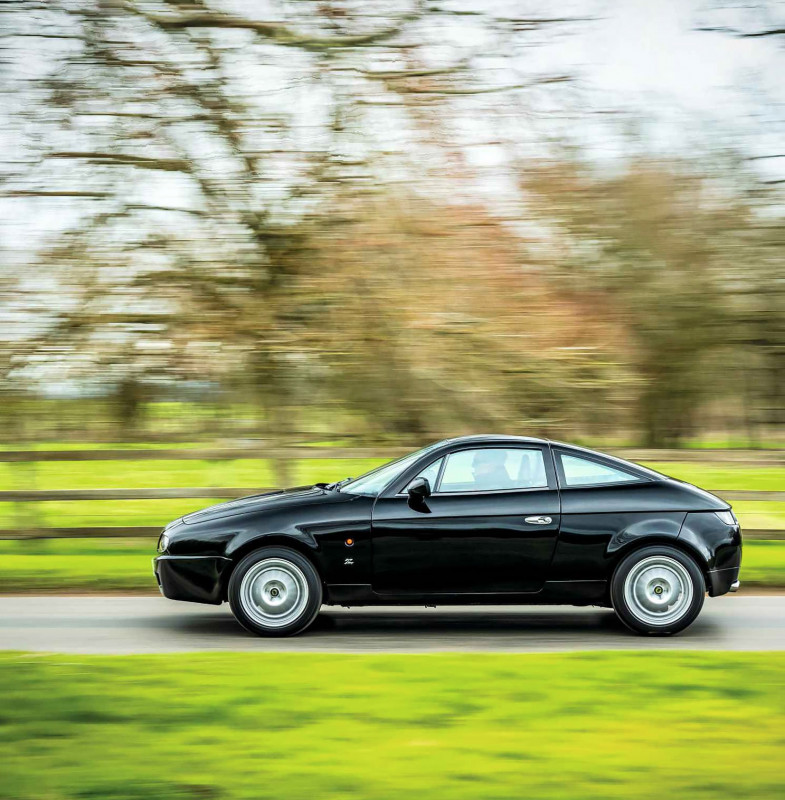
Guessing I might not be alone in this, but ‘Zagato’ for me has always been shorthand for exotic’. Think Alfa-Romeo 6C, Fiat 8V, Aston Martin DB4 GT and it’s no wonder. Yet maybe it’s a semantic thing, the fact that a name beginning with ‘Z’ somehow stands out on a page and is innately alluring. Because as well as clothing the outer limits of the automotive firmament, Zagato has clad many a more homely motor and thus imbued it with a sense of otherness that goes beyond the sum of its parts.
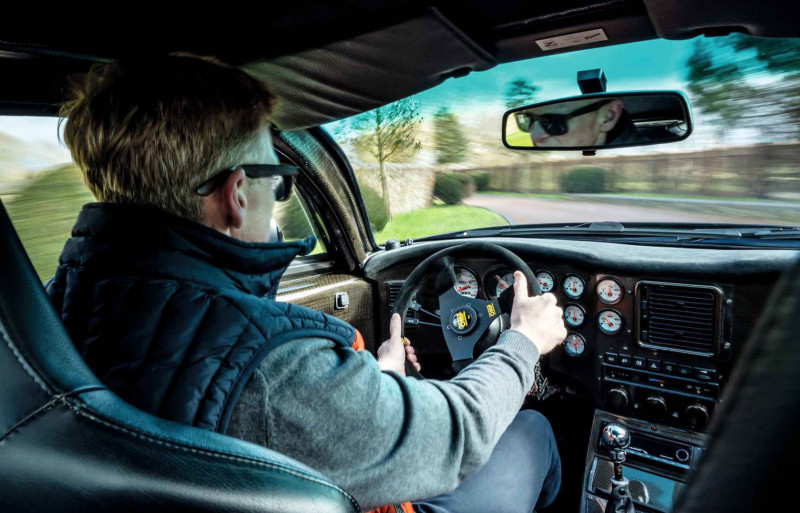
How else do we assimilate our expectations with the notion of the diminutive Abarth 750 in this month’s Overdrive? Similarly, we are expected to be appropriately calibrated to the prospect of the ultra-modern alloy-bodied coupe you see here. It’s difficult enough to believe by the look of it that the Lancia Hyena dates back to the early 1990s; even more so that its engineering roots go back beyond the humble Fiat 128 to the 1964 Autobianchi Primula, the car that took the Mini template and refined it well before VW redefined the ‘people’s car’ as the Golf a decade later.
Yes, those are the modest origins of the unlikely-looking rally winner that the Hyena is based on. The Lancia Delta was a Milanese shopping car for the moderately well-heeled, benefitting from an elegant pertness imparted by the pen of Giorgetto Giugiaro, though it looked pretty much superannuated by the time it had progressed to become the HF Integrale. Then it won five World Rally Championships. On the trot, from 1987 to 1991.
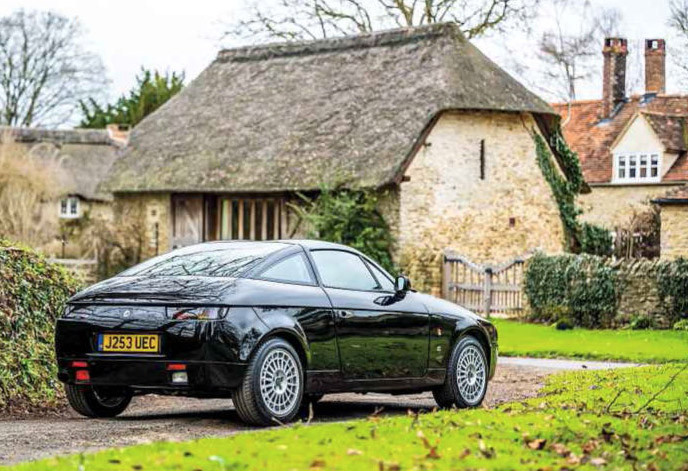
A laugh riot? Keep your sense of humour intact; I’m not teasing. This is a very serious car indeed. The Integrale evolved from a car with workaday mechanical elements to become a legend. And then along came Zagato to give it the kind of body it had always deserved, one that follows in the tradition of such tiny stars as the Fulvia Sport. Only this time, the sporting success had come before the Zagato transformation. And that transformation not only provided a more suitable image for a car with this kind of gravitas, it also resulted in a car no longer compromised by the constraints of such an ageing body design.
OK, so maybe it’s time for a bit of an explanation about those underpinnings. The Lancia Delta was launched in 1979 as the spiritual successor to the compact Fulvia Berlina, though it was very much a product of the Fiat era. It was styled by Italdesign on the Fiat Ritmo/Strada hatchback platform, itself largely based on the 128 that preceded it (and, thanks to its prescience, was technologically up-to-date), with the same MacPherson strut-type suspension though with components taken from the Lancia Beta. Engines were largely common to the Ritmo, single-cam fours designed by none other than Aurelio Lampredi, though with Weber twin-choke carbs and Lancia-developed inlet manifolds and exhausts for a bit more power and refinement.

There was a version sold in Sweden as the Saab 600, and Saab helped out with the bits that would be important in the North European market, such as rust-proofing (then a notorious Lancia weakness, and not altogether successful in spite of newfound Nordic knowledge) and heating and ventilation, as well as insisting on vertical tail-lights that would allow a tailgate that opened down to bumper level. Saab also helped to engineer the split-folding rear seats. A few years later the Swedes collaborated again, with the Type 4 project that yielded the Lancia Thema, Saab 9000, Alfa 164 and Fiat Croma.
Sporting developments of the Delta began with the turbocharged HF in 1983, then the 2.0-litre HF 4WD, unveiled at the 1986 Turin motor show. A year later, that was repurposed as the HF Integrale, with its iconic wheelarch blisters, and tarmac and gravel domination ensued via the Integrale 16v and Evoluzione, the final homologation car, with bigger wheelarches over a wider track, strengthened structure and suspension, restyled bonnet and headlamps, power up to 212bhp (up 20bhp on the original), Brembo brakes and distinctive Speedline alloys. Construction was subbed out to Maggiora, a body panel supplier, which took over part of Lancia’s Chivasso plant.
These days there’s a modern take on the Integrale, a series of cars ‘restomodded’ by Netherlands-based Maturo, promising 400bhp and a strengthened body, re-clad in carbonfibre. You can read more about that car (as well as the Zagato-bodied Abarth, of course) in our Overdrive pages. But as you can see here, there’s nothing new about a bespoke-bodied Integrale — nor even one with a Dutch connection.
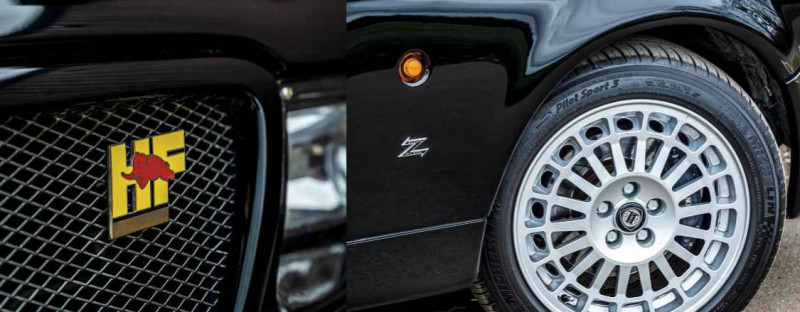
Paul Koot grew up in the Netherlands with an engineer father who was passionate about Italian sports cars, and spent much of his youth getting his hands dirty with them. In the 1980s he started a business dealing in classic Italian cars, and struck up a relationship with Elio and Andrea Zagato when he was looking for expertise in aluminium body repair while restoring an Aston Martin DB4 GT Zagato.
‘LANCIA GRANTED PERMISSION FOR ITS RADGE TO DE PLACED ON THE GAR AND DEALERS
During a conversation in 1990, Elio Zagato showed Koot a drawing of a compact coupe, sketched by Marco Pedracini. Koot suggested that they project it over the Integrale chassis — ‘I thought it was the best basis of the time,’ he told me in late 2001 — and thus a plan to build the Hyena grew. Koot initially envisaged no more than half a dozen, and showed a styling model at the Brussels motor show in January 1992 — only for 14 orders to be placed. ‘We had to build them,’ he said, and a prototype followed at the Paris show in October 1993.
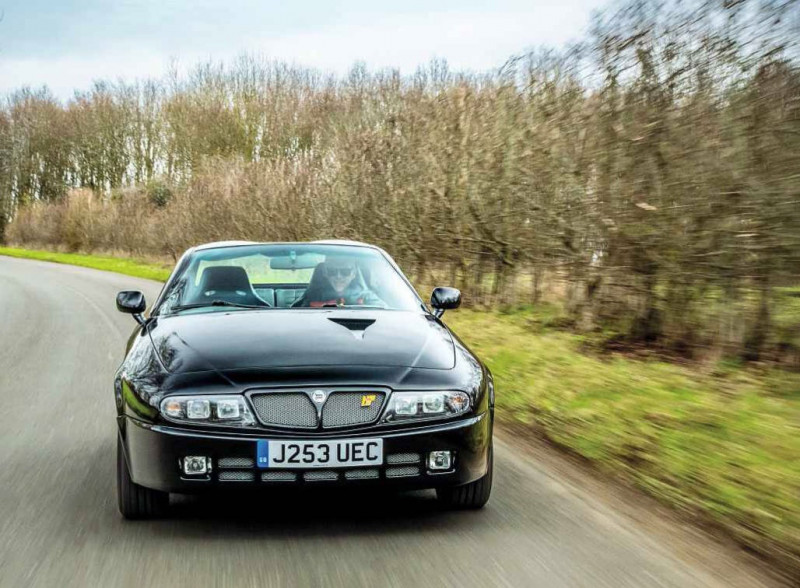
The idea was for Zagato to craft a steel frame and aluminium-skinned body around the Integrale floorpan and mechanicals; Lancia granted permission for its badge to be placed on the car and dealers clamoured to sell it. Only the process wasn’t so straightforward, as Lancia couldn’t supply rolling chassis and the project almost foundered after a year of discussions. So Koot decided to build the Hyena using complete HF Integrales, bought through Dutch Lancia importer LANIM and stripped by Loot’s Lusso Service Holland business. They were then sent to Zagato in Milan to be assembled with the new body.
Zagato’s bodywork employed aluminium alloy over a lighter steel structure, and composite materials for the doors, outer sills and bumpers. It was fully 50% stiffer than the standard, bendy five-door Lancia structure and 15% lighter, thanks not only to those materials and the simpler body (two doors, no boot opening) but partly also to interior fixtures made entirely from carbonfibre, produced by MOC in France.
IT'S DIFFICULT TO BELIEVE ‘BY THE LOOK OF IT THAT THE HYENA DATES BACK TO THE EARLY 1990S'
The necessity to buy complete cars and the labour-intensive disassembly and build process inevitably meant that the Hyena was expensive to complete. At one point Koot had come up with a business plan to produce 600 examples, based on converting rolling chassis, with a projected price equivalent to that of an Alfa Romeo GTV. Ultimately, it hit the road in the UK for £74,000, more than twice as much as envisaged, and which put the Hyena in Ferrari 348 territory. That was a lot of money for a four-cylinder coupe based on an old hatchback, no matter how exotic the Zagato connection (or its rally-winning pedigree) made it.
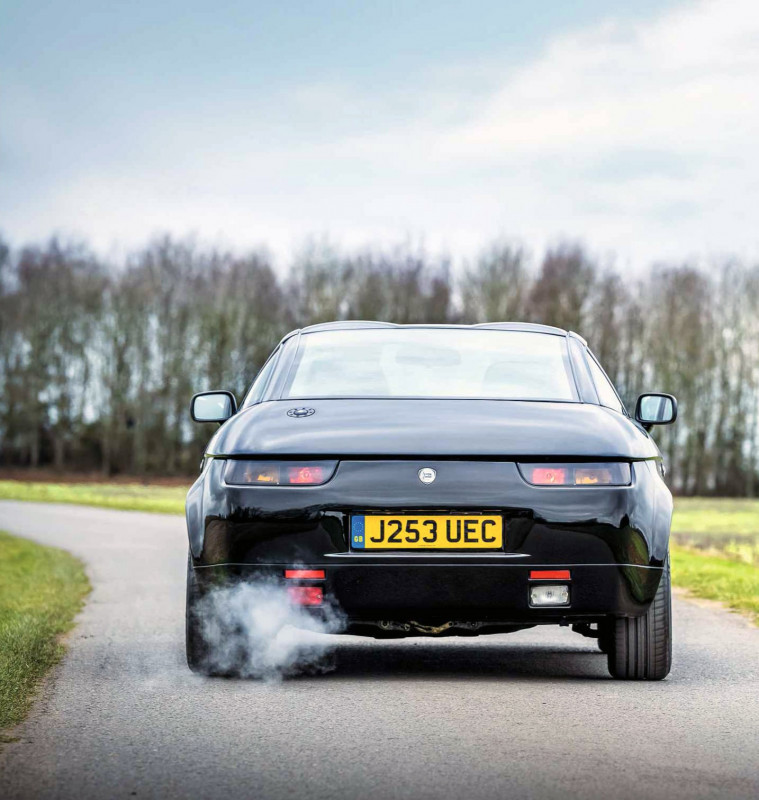
Koot ran the figures again and reckoned on a run of 75 cars but, while production was underway, Lancia ended the Integrale line and the final tally was 24, completed (mainly) between 1992 and 1995. Back when I spoke with Koot, two Hyenas were still in the process of being finished, awaiting a windscreen (same as the Zagato-built Alfa Romeo ES30 SZ’s), already in short supply even then.
Now it’s time to refamiliarise myself, at which point I realise that this is the third Hyena I’ve driven: that’s one-eighth of the cars built, a proportion I’m not sure I can boast about many other cars, though editor James Elliott can beat me hands down, having driven half of all the Monteverdi Hais. Now there’s exotic.
Anyway, I digress. This example is for sale with Girardo & Co, the second Hyena built (it bears the 1991 identity of the donor Integrale) and uniquely homologated with the Delta’s rear bench seat. There’s room for legs back there, not so much for heads.
Its first owner was an English banker who wanted an exciting yet comfortable car for driving between his British and Italian homes. While every Hyena’s engine was upgraded to 250bhp, this one was massaged further towards 200bhp by means of a gas-flowed cylinder head, ‘fast road’ camshafts and a tubular exhaust manifold, which made for a wider power band. Cross-drilled and grooved brakes were also specified, along with a 90-litre competition fuel cell for a 450-mile range.
It changed hands in October 2004 and was sent to Mavcorse Preparazione Sportive in Milan to be repainted in black. Interior trim was removed so the cabin could be swathed in Teknofibra insulating material to improve refinement and heat protection. Then a French collector acquired the car in 2012, enhancing it further with uprated camshafts, valve springs, adjustable camshaft pulleys, a Garrett GT28 turbocharger, silicone water and oil hoses, an enlarged intercooler, carbon air intake, realtime engine mapping and a boost gauge. Since 2018 it has been UK-based.
I grip the dished OMP steering wheel, fitted by its French owner, and note some Zagato design cues, not least the double-bubble roof — its contours are reflected in the online of the dashtop — and a Z-shaped crease in both carbon door linings. Beyond those are some
parts-bin spots: dainty Alfa Spider external door releases, rather more prosaic Fiat Tipo plastic ones within, and Alfa 75 outer air-vents. The driving position should be all wrong, as you sit high, thanks to the Delta floorpan, with the throttle off to the right and the wheel in your lap with arms outstretched — yet it suits my short legs. Any nearer for the arms and I'd be banging my forehead on the header rail and screen pillar.
Start the engine and its idle sounds anything but exotic: no multi-cylinder mellifluousness, instead the slightly rattly bluster of the Integrale four-cylinder. Gun it and it sounds a bit like the old Alfa 105 twin-cam, snarly, percussive, and more than just a little encouraging. It’s hugely tractable, too, no waiting for it to climb on the cam. Then the turbo cuts in and you’re on a different level altogether, thrillingly quick, the match of many a junior supercar. You’d surely have little trouble keeping up with that 348.
Handling is utterly stable: grippy, poised, accurate. Load up on speed and it seems to glide above the road surface, with little roll and no histrionics, just this uncanny knack of getting you round the corner without making you feel as though you’re being drilled into the tarmac. Like it’s turning every B-road into a rally stage.
Well, it’s an Integrale underneath, so that’s only to be expected. Perhaps less so are the sheer solidity of the drivetrain and the total lack of distortion between steering wheel and
steered wheels. Equally, the accuracy and ease of the gearshift are a world away from the usual rubbery Fiat crap of that era. The rigidity of the body is noticeable as well. Over corrugated surfaces you can tell there are some big holes in an Integral's shell, whereas the Hyena moves all of a piece.
The ride feels pretty hard at first, but it soon gets up on the plane and flows over everything but the worst bumps and potholes. For a driver keen to get from one point to another as quickly as possible, little can match it, though you’d have to be pretty focused for that trip from the UK to Italy. And pity those in the back.
Hyenas don’t come up for sale very often, which is to be expected when there are only 24 of them. The last time I drove one was in 2010; it was on the market for £100,000, so things had already moved along somewhat (those last two being prepared for sale in 2001 were marketed for around £60,000).
Let’s compare it with the Ferrari 348 it was pitched against when new. Around 7000 of those were built in total, so they’re easier to find, and prices start well south of £50,000, but you can expect to pay £80,000 for an immaculate low-miler. As for the Hyena, these days you’re looking at more like double the 2010 figure for a fine example. Modest origins or not, that sounds pretty exotic, and certainly worthy of the Zagato name.
THANKS TO Girardo & Co, girardo.com.
‘GUN IT AND IT SOUNDS A DIT LIKE THE OLD ALFA 105 TWIN-CAM, SNARLY, PERCUSSIVE, AND ENCOURAGING’
TECHNICAL DATA 1991 Lancia Hyena Zagato (standard)
- Engine 1995cc DOHC 16v four-cylinder, turbocharged, fuel injection
- Max Power 250bhp @ 5750rpm
- Max Torque 220lb ft @ 3500rpm
- Transmission Five-speed manual, four-wheel drive
- Steering Rack and pinion, power-assisted
- Suspension Front and rear: MacPherson struts, coil springs, anti-roll bar
- Brakes Vented Brembo discs
- Weight 1148kg
- Top speed 143mph
- Acceleration 0-62mph 5.4 seconds
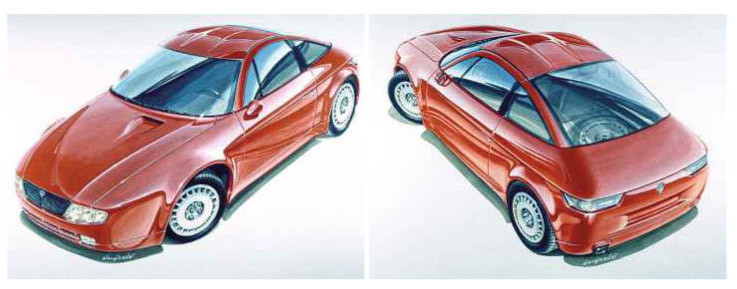
Above Badging is all- important, be it Lancia's own ‘HF’ elefantino logo (elephants being unstoppable) or the mark of Zagato
Clockwise, from left No boot opening, to the benefit of rigidity; interior crafted mainly from lightweight carbonfibre; rear seat unique to this Hyena; rally-winning turbo four.
Right and below Hyena's powerful-looking front quarters and agile-looking rump evolved from sketches inspired by its namesake.


